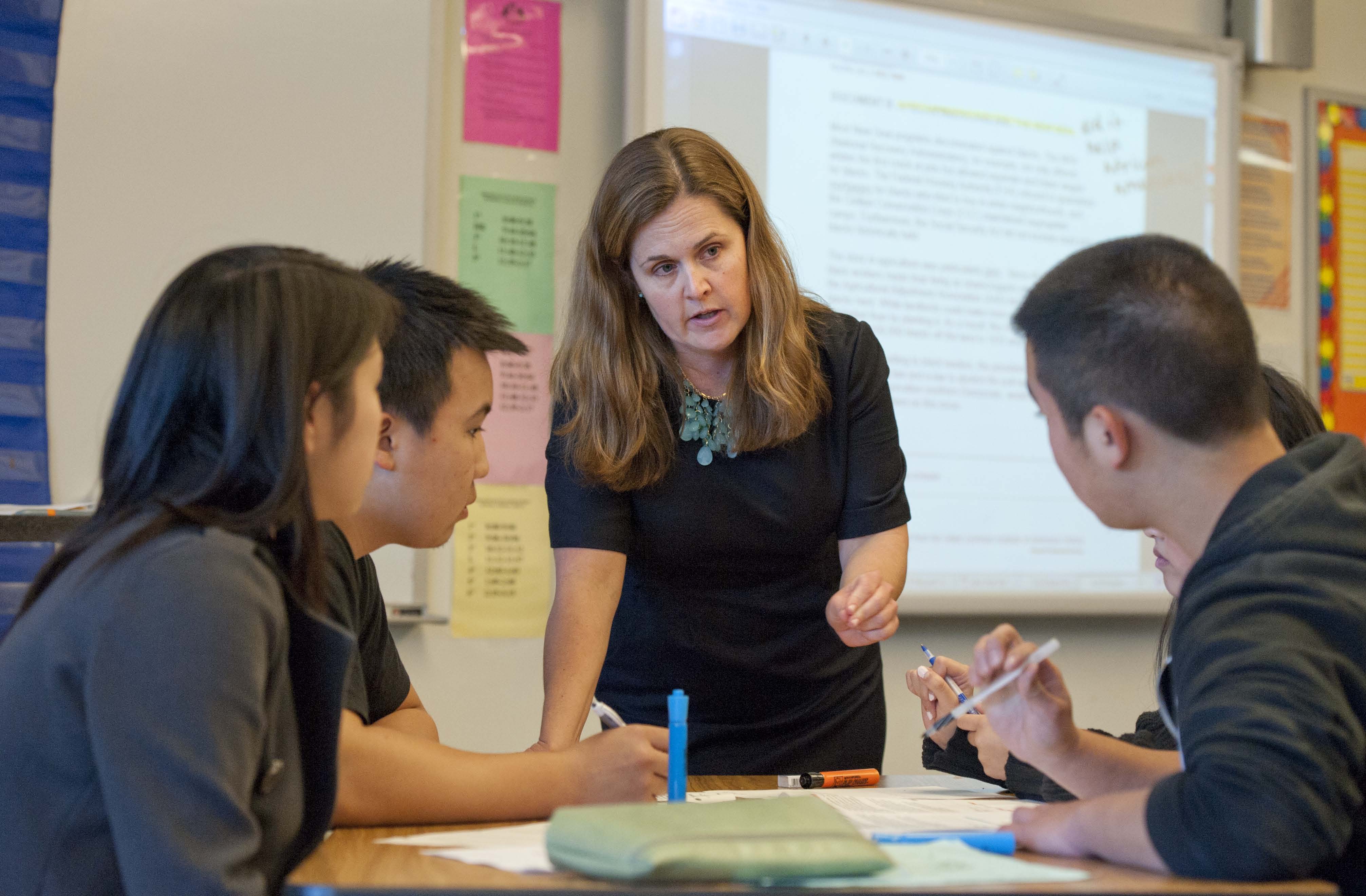
How has Reading Like a Historian helped students learn about U.S. history? Watch it in action.
By Brooke Donald
The 11th-graders at Lincoln High School use a curriculum developed at Stanford that uses letters, speeches and government documents from the period to teach students how to analyze history in context.
There are no orderly rows of desks in Valerie Ziegler's high school history class – students sit in groups of three or four at small tables around the room. There also is no lectern because there are no lectures. And perhaps most striking, there are no textbooks.
The 11th-grade class at Abraham Lincoln High School in San Francisco learns about the Vietnam War, women's suffrage, civil rights, the Great Depression and other major events in U.S. history by analyzing journal writings, memoirs, speeches, songs, photographs, illustrations and other documents of the era.
"I always tell my students they're historians-in-training, so the work we do in here is that of a historian," Ziegler said.
The nontraditional curriculum Ziegler uses, called Reading Like a Historian, was designed at Stanford and is among the projects of the Stanford History Education Group.
The curriculum was introduced in 2008 at five schools in the San Francisco Unified School District as part of a study by Abby Reisman, who was the head curriculum designer while completing her doctoral work at Stanford.
Subscribe to our monthly newsletter.